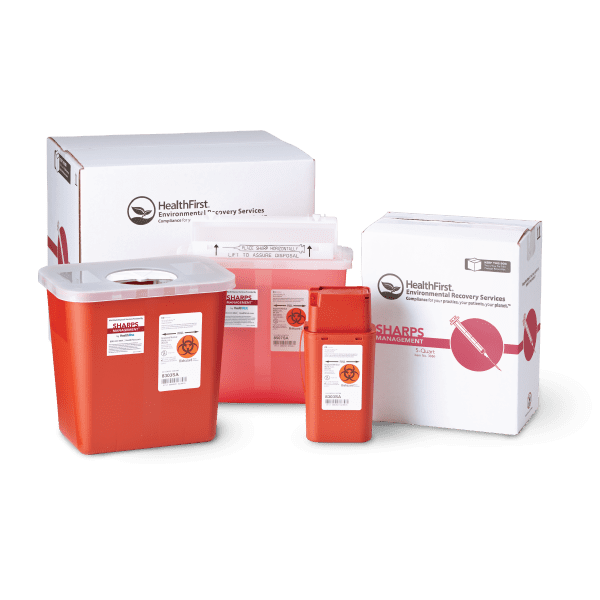Ecological Responsibility: The Eco-Friendly Strategy to Medical Waste Disposal
Ecological Responsibility: The Eco-Friendly Strategy to Medical Waste Disposal
Blog Article
Eco-Friendly Waste Disposal Solutions for a Lasting Future
Green waste disposal services are not simple alternatives however imperatives for a lasting future. From waste segregation at the resource to energy recuperation from waste, a myriad of methods exist to resolve the challenges of waste disposal responsibly.

Waste Partition at Source
When applying waste segregation at source, individuals can dramatically contribute to a lot more reliable recycling and waste monitoring systems. By separating various kinds of waste such as paper, plastic, glass, and natural materials right from the point of disposal, the procedure of recycling ends up being structured, minimizing contamination and increasing the value of recyclable materials. This practice not only preserves sources but additionally lessens the quantity of waste destined for landfills or incineration.
Correct waste partition at the source is vital for advertising a round economy where materials are recycled, recycled, or composted instead of being disposed of as garbage. It also helps in the efficient collection and handling of recyclables by waste management facilities - medical waste removal near me. Neighborhoods that take on waste segregation at the source commonly experience price financial savings in waste monitoring and see a decrease in environmental air pollution
Individuals play a vital duty in the success of waste partition initiatives by bearing in mind exactly how they dispose of their waste - click here. Education and recognition projects can better encourage the adoption of these practices, bring about a more lasting and environment-friendly technique to squander disposal
Composting and Organic Waste Monitoring
An effective technique for taking care of natural waste and advertising sustainability is through composting. Composting is a natural process that disintegrates organic materials like food scraps, lawn waste, and paper into nutrient-rich dirt changes. This procedure not only diverts natural waste from landfills yet also produces a valuable product that can enhance dirt, enhance plant growth, and lower the need for chemical plant foods.

Carrying out composting programs at the home, area, and municipal levels can substantially reduce the amount of natural waste that finishes up in land fills. Educational campaigns on composting ideal practices and the advantages of organic waste diversion can even more encourage widespread adoption of this eco-friendly waste management service. click here. Eventually, composting offers a useful and sustainable strategy to taking care of organic waste while contributing to a greener and more lasting future
Recycling and Upcycling Efforts
One key aspect of advertising environmentally friendly waste administration techniques is with the implementation of recycling and upcycling initiatives. Additionally, reusing help in the preservation of raw materials and decreases the demand for traditional waste disposal methods like landfilling and incineration.
Upcycling, on the various other hand, is the creative reuse of discarded products or products to create items of better or value than the initial. By upcycling, less waste is sent to garbage dumps, and the need for new raw materials reduces. This lasting technique advertises development and motivates people to watch waste as a useful resource.
Both recycling and upcycling initiatives play a vital function in advertising a circular economic situation and decreasing the environmental impact of waste disposal. click here. By incorporating these methods into daily life, people can add to a more sustainable future for generations to find
Power Recovery From Waste

There are a number of technologies made use of for energy recuperation from waste, including incineration, gasification, and anaerobic food digestion. Incineration entails burning waste at high temperatures to create steam, which after that drives turbines to produce electricity. Gasification converts natural products into synthetic gas, which can be utilized for power generation or as a gas resource. Anaerobic food digestion breaks down organic waste to create biogas, which can be used for heat or electrical power production.

Community-Based Waste Reduction Programs
Taking advantage of community engagement and involvement is necessary in applying efficient waste reduction programs that complement power healing campaigns in lasting waste administration techniques. Community-based waste decrease programs include joint efforts between locals, local companies, and authorities to decrease waste generation and improve recycling prices. These programs usually consist of academic projects to increase recognition concerning accountable waste disposal methods, the significance of recycling, and the advantages of decreasing waste.
One usual approach is the establishment of community recycling centers where citizens can drop off recyclable products easily. These centers advertise reusing by making it conveniently available and supplying resources for correct waste sorting. Additionally, area clean-up occasions and community recycling drives help infuse a feeling of environmental responsibility and unity among citizens.
Additionally, community-based waste decrease programs can include campaigns such as composting workshops, multiple-use item exchanges, and the promo of lasting techniques in regional organizations - medical waste removal service. By entailing the neighborhood in waste decrease initiatives, these programs develop a sense of ownership and collective obligation towards building a much more sustainable future
Verdict
Finally, applying green waste disposal remedies such as waste segregation, composting, recycling, power healing, next and community-based programs is vital for a sustainable future. By adopting these methods, we can minimize the environmental influence of waste generation and advertise a circular economic climate. It is essential that people, federal governments, and businesses interact to focus on lasting waste monitoring methods to safeguard our world for future generations.
From waste partition at the resource to power recuperation from waste, a plethora of methods exist to resolve the obstacles of waste disposal sensibly. Educational efforts on composting ideal methods and the benefits of natural waste diversion can further motivate prevalent adoption of this environmentally friendly waste administration solution.Efficiently utilizing power from waste products is a critical strategy in sustainable waste monitoring practices.Utilizing community engagement and engagement is important in implementing reliable waste reduction programs that complement energy recovery campaigns in sustainable waste administration methods.In final thought, executing environment-friendly waste disposal remedies such as waste partition, composting, reusing, power recuperation, and community-based programs is crucial for a sustainable future.
Report this page